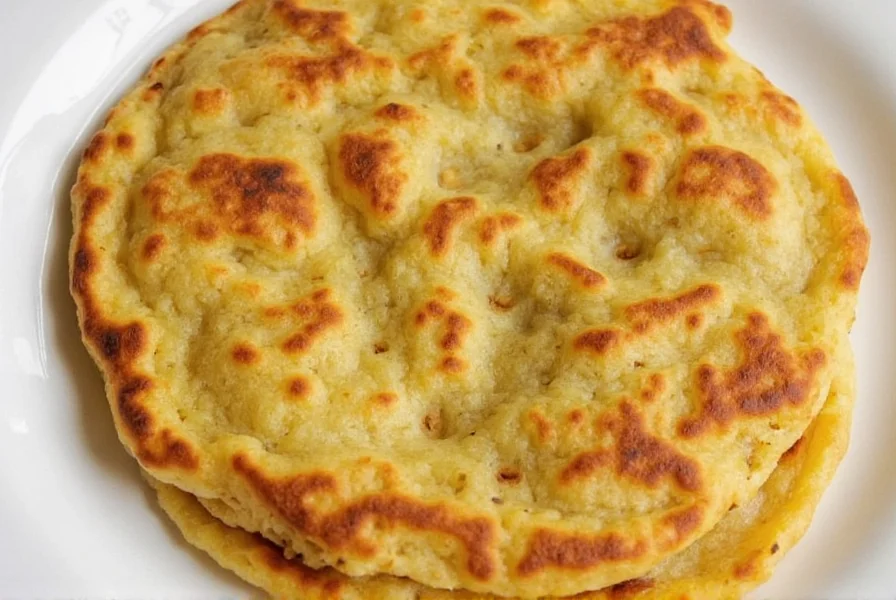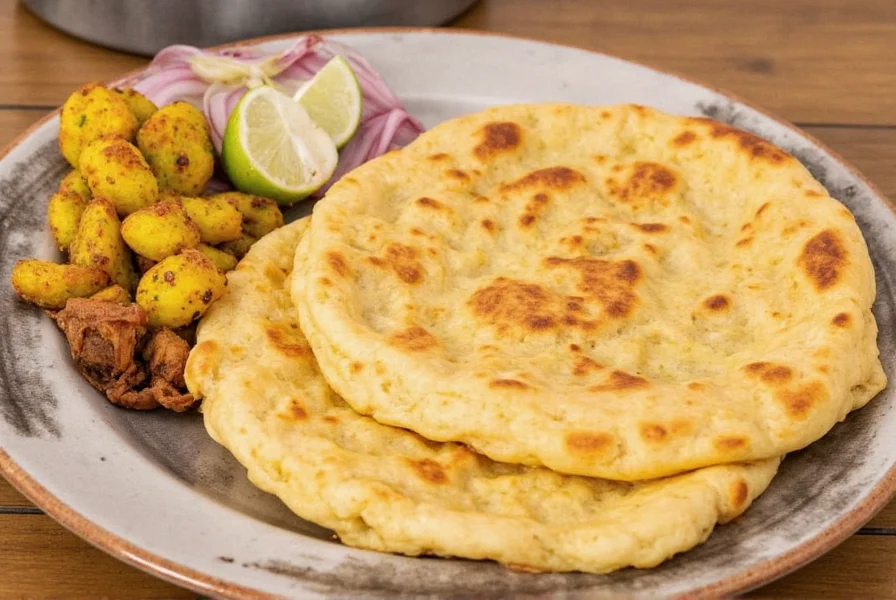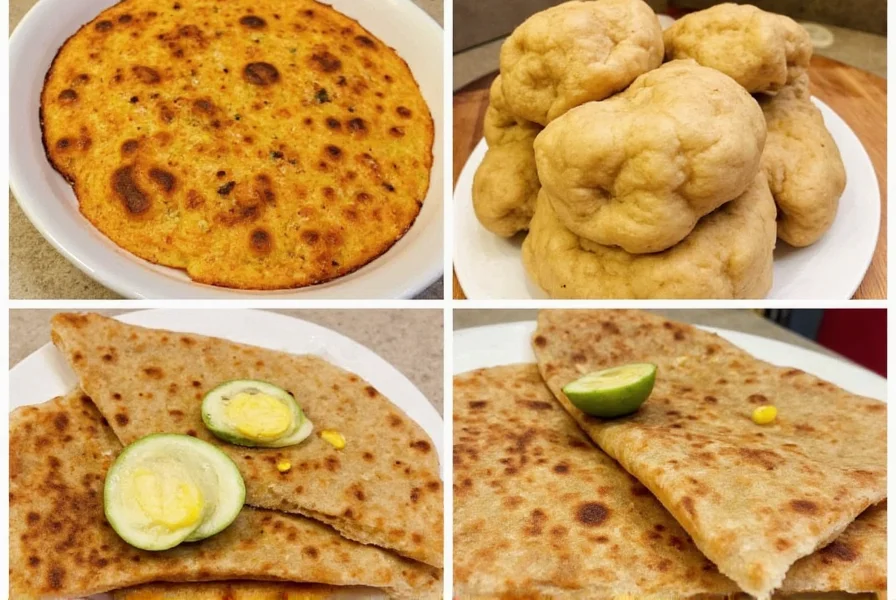Hey foodies! Ever wondered why your aloo paratha doesn't turn out as flaky or fragrant as the one from your favorite street vendor? You're not alone. Whether you're a home cook with a spice rack full of cumin and amchur or a seasoned chef who's mastered every flatbread under the sun, this guide will give you game-changing tips on making perfect aloo parathas — and how to store those spices just right.
| Spice | Flavor Profile | Bonus Hack |
|---|---|---|
| Cumin (Jeera) | Earthy, nutty, slightly bitter | Toasted in oil first for depth |
| Red Chili Powder | Heat + color boost | Mix with salt before adding |
| Garam Masala | Warm, sweet, aromatic | Add at end for punch |
| Amchur (Dried Mango Powder) | Tangy, sour kick | Add after cooking to preserve tang |
The Spice Foundation: Know Your Flavor Boosters
If you've ever bitten into an aloo paratha and thought it was "just okay," chances are the spice blend didn't do its job. Let's break down the holy trinity of flavor in any good aloo filling:
These aren't just pantry staples — they're your secret weapons to turning boiled potatoes into something worth writing home about.
Store Spices Like a Pro for Maximum Impact
Let's face it — if your turmeric is sitting next to the stove in a dusty bottle, you're losing flavor fast. Here's how to keep your spices spunky:
- Keep them cool: Heat = enemy. Store spices away from the oven, preferably in a shaded cabinet.
- Keep them dry: Moisture ruins texture and aroma. Avoid glass jars unless they're sealed tight.
- Use opaque containers: Sunlight fades colors and flavors. Dark glass or metal tins are best.
- Date your spices: Ground spices last ~6 months; whole spices up to a year. After that, their magic fades.
Want a pro tip? Use vacuum-sealed spice bags if you buy in bulk. They lock in freshness and prevent clumping — a common issue when spices sit unused for too long.
The Magic Mix That Elevates Aloo Filling
Most people toss mashed potatoes with salt and call it a day. Wrong move! Here's the golden ratio:
1 medium potato → ½ tsp salt → ¼ tsp red chili → ½ tsp jeera → ¼ tsp garam masala → A pinch of amchur → Fresh coriander (optional but recommended)
This combo hits every note — salty, spicy, earthy, warm, and tangy. Don't be afraid to tweak based on taste, but start here to get that restaurant-grade zing.
Toast Spices for Deeper Flavor
Here's where most folks miss out — toasting your spices in oil before mixing into the aloo. It unlocks hidden aromas and layers of flavor. Try this:
- Heat 1 tsp mustard oil (or neutral oil) in a pan.
- Add crushed jeera seeds and let sizzle until fragrant (~20 seconds).
- Add red chili and stir quickly to avoid burning.
- Pour over mashed potatoes and mix well.
This step takes less than a minute but makes all the difference. Think of it like waking up the spices before they go to work.
Keep Your Parathas Crispy Longer
You made a dozen parathas. Great. But by the time you finish the third one, the rest are soggy? Not anymore. Here's how to keep them crisp:
- Don't stack them immediately. Place each paratha on a wire rack to drain excess moisture.
- Wrap in foil after stacking and place in a preheated oven at 200°F (95°C) to keep warm without steaming.
- Use a cast iron skillet for even heat distribution and that signature crispness.
Buying Guide: Top Tools & Spice Blends for Perfect Aloo Paratha
Whether you're setting up your kitchen for the first time or upgrading your tools, here are our top picks that help you nail every batch of aloo paratha.
1. Stainless Steel Tawa / Griddle
- Features: Even heating, durable, easy to clean
- Advantages: Retains heat better than non-stick pans
- Use Case: Ideal for rolling and frying multiple parathas at once
- Target Audience: Home cooks, breakfast lovers, meal preppers
- Suitable Occasions: Weekday breakfasts, weekend brunches, gatherings
2. Vacuum-Sealed Spice Jars
- Features: Air-tight seal, UV-protected material
- Advantages: Preserves flavor, prevents moisture absorption
- Use Case: Storing bulk purchases of cumin, chili, coriander
- Target Audience: Spicy food lovers, Indian cuisine fans
- Suitable Occasions: Cooking anytime you want fresh flavors
3. Manual Roti Maker
- Features: Cast iron body, adjustable thickness control
- Advantages: Makes evenly rolled rotis in seconds
- Use Case: For busy mornings or large batches
- Target Audience: Working professionals, families
- Suitable Occasions: Daily meals, potlucks, picnics

4. Ready-to-Use Aloo Paratha Spice Mix
- Features: Balanced blend of jeera, chili, garam masala
- Advantages: Saves time, consistent flavor every time
- Use Case: Quick prep without measuring individual spices
- Target Audience: Beginners, lazy Sundays, college students
- Suitable Occasions: Lazy mornings, camping trips, quick dinners
Frequently Asked Questions
What's the best oil for making aloo paratha?
Mustard oil gives authentic flavor and high smoke point, but you can also use ghee or neutral oils like sunflower. The key is to use enough oil on the tawa to get that crispy exterior while cooking.
Why is my aloo paratha not crispy?
Several factors could be at play: insufficient oil on the tawa, incorrect heat level (too low), stacking parathas immediately after cooking, or moisture in the filling. Try our Hack #4 tips for keeping parathas crispy longer.
How do I prevent the filling from leaking?
Make sure your potato filling isn't too wet - drain boiled potatoes well and let them cool completely. When sealing the paratha, pinch the edges tightly and roll gently from the center outward. Dusting the rolled paratha with dry flour also helps prevent sticking and tearing.
Can I make aloo paratha without ghee/oil?
While traditional aloo paratha uses some oil or ghee for cooking, you can reduce the amount. However, completely eliminating fat will affect both texture and flavor. For healthier option, use minimal oil on a well-preheated non-stick tawa.
How long can I store cooked aloo paratha?
Freshly cooked parathas are best eaten immediately. For storage, keep at room temperature for up to 4 hours, refrigerate for 2-3 days, or freeze for up to 3 months. Reheat on a tawa with a little oil for best results.
Can I prepare aloo paratha filling in advance?
Absolutely! Our pro tip: make extra filling and freeze in small portions. When needed, just thaw, roll into dough, and fry. This saves time while maintaining flavor if spices are stored properly (see Hack #1).
Conclusion: More Than Just Potatoes in Roti
So there you have it — your ultimate guide to making flaky, flavorful aloo parathas, powered by smart spice hacks and clever storage tips. Whether you're feeding the family or treating yourself to a cozy morning breakfast, these tricks will take your dish from "meh" to "mind-blowing."
Remember, it's not just about the potato — it's about how you treat those spices. So stash them properly, toast them with love, and season like a boss. Happy cooking!

Pro Tip: Make extra filling and freeze it in small portions. When you need a quick bite, just roll and fry!











 浙公网安备
33010002000092号
浙公网安备
33010002000092号 浙B2-20120091-4
浙B2-20120091-4